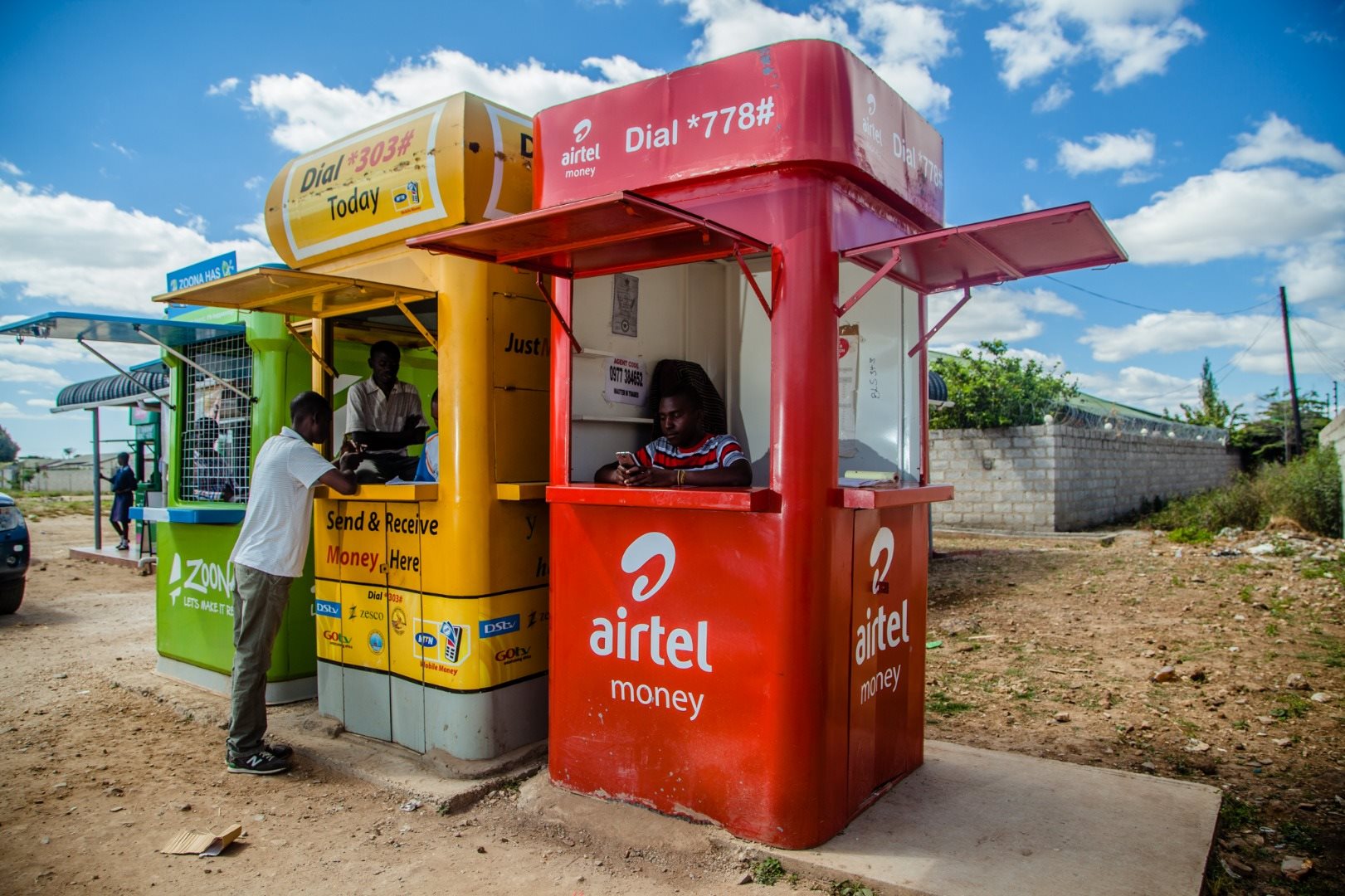Zambia: The State of Digital Financial Services in 2017
By Uloma Ogba
For more information, please contact:
Uloma ogba
Project and Knowledge Management Consultant,UNCDF
uloma.ogba@uncdf.org
Or visit www.uncdf.org
Tags

Mobile money booths in Lusaka, Zambia ©
UNCDF/Zambia
Last year, we reported that the digital financial services (DFS) market in Zambia was at a tipping point. Based on the results of an Annual Provider Survey (APS) conducted in early 2018, we are happy to report that the growth trends the industry witnessed starting in 2015 were sustained through the end of 2017. The DFS industry in Zambia went from having only 2% of the adult population with an active DFS account from seven providers in 2014 to 18% of the adult population with an active DFS account from 18 providers in 2016. This growth continued through 2017, with the percentage of adults with an active DFS account reported at 24%. To handle the increase in the number of active customers, there has been a 74% growth in the number of active agents from 13,216 in 2016 to 22,946 in 2017.
Increased trust in digital financial services
A 2017 report commissioned by the International Finance Corporation and Mastercard Foundation on the perceptions and attitudes to digital financial services in Sub-Saharan Africa found that lack of information on the risk aspects of the financial system in general, and for DFS in particular, had created distrust and skepticism towards DFS in some markets, including Zambia. However, data from the APS survey shows that in 2017, DFS customers in Zambia were cashing into their wallets much more than they were cashing out. The number of customers conducting cash-in transactions grew by 183% while the number conducting cash-out transactions grew by only 20%.
The choice to leave more money in their wallets could be a sign that customers are beginning to trust DFS more, prompting them to use their wallets as a store of value and to conduct more transactions. This is good news for providers and innovators looking to improve their product offerings as there is potential for a savings product to be developed to address customers willingness to use their accounts as a store of value.
Moving towards interoperability
As Zambia inches closer to implementing the National Financial Switch, the increase in the number of collaboration between banks and mobile network operators (MNOs) offering push (to) and pull (from) transfers to bank accounts is an indicator that the Zambian digital financial services market is ready for this innovation. In December 2017 alone, more than $5.2 million was transacted between bank accounts and MNO customer wallets, up from less than $10,000 in December 2016. For a market once characterized as being stuck in a sub-scale trap, the rise in the number and complexity of transactions being performed by customers indicates that not only has customers level of usage of DFS increased, their level of meaningful awareness is on the rise and customers are beginning to understand and demand for increasing flexibility and relevance of the products and services offered to them.
Addressing agent inactivity
As the number of active DFS customers grew from 1.3 million in 2016 to 2.3 million in 2017, there was a corresponding increase in the active agent base from 13,216 in 2016 to 22,946 in 2017. Both the volume and value of transactions at agent locations increased significantly, growing by 93% and 149% respectively. However, there is more to the story concerning agents. In the pool of 62,876 registered agents, 64% of them are currently inactive and most inactive agents are MNO agents. What is at the root of this issue? It could be that providers in Zambia have yet to figure out the winning formula to implementing effective agent network management strategies and still struggle to provide their agents with the support needed to grow their businesses into profitable ventures. Or it could be that agents are setting up businesses in locations that are not commercially viable, pointing to the need for more timely and up-to-date information on the spread of agent locations across the country.
Innovation gaining ground in Zambia
A preliminary scoping exercise revealed that as of December 2017, there are at least 25 FinTech’s developing solutions across sectors that range from financial services, pay-as-you-go solar, health, education to agriculture in Zambia. These FinTech’s are disrupting the DFS industry and proving that increased collaboration between FinTech’s and digital financial service providers could be the key to bringing more Zambians into the formal financial service system. Research on specific user groups such as farmers, refugees and mothers in Zambia revealed a demand for tailored digital financial products, highlighting opportunities for FinTech’s to provide innovative digital solutions to meet the needs of Zambian customers.
What happens next?
By all indications, the DFS industry in Zambia is alive and thriving. Considerable progress has been made in terms of improving the awareness and usage of DFS among the adult Zambian population and providers and other institutions such as FinTech’s are rising to meet growing customer demand by introducing innovative solutions onto the market. The National Financial Inclusion Strategy for Zambia targets an overall increase in formal financial inclusion in Zambia from 38% in 2017 to 70% by 2022. DFS will play a key role in driving the projected increase.
However, there are still several challenges that need to be addressed if Zambia is to remain on course to meet its financial inclusion targets. More than ever, the State of the Zambian DFS Market report points to the need for access to timely and relevant data to support informed decision making by all the relevant stakeholders working to advance financial inclusion in Zambia.